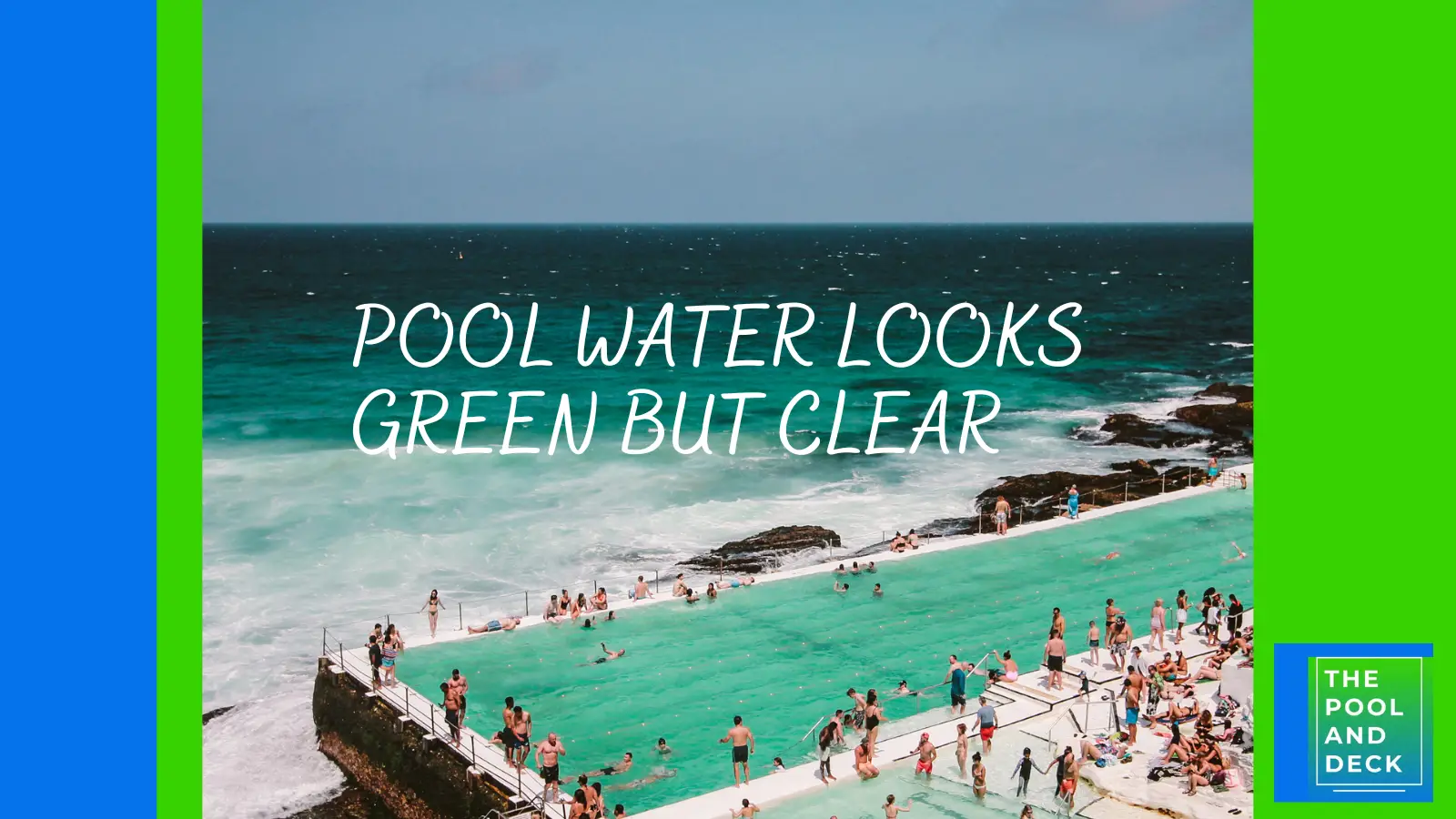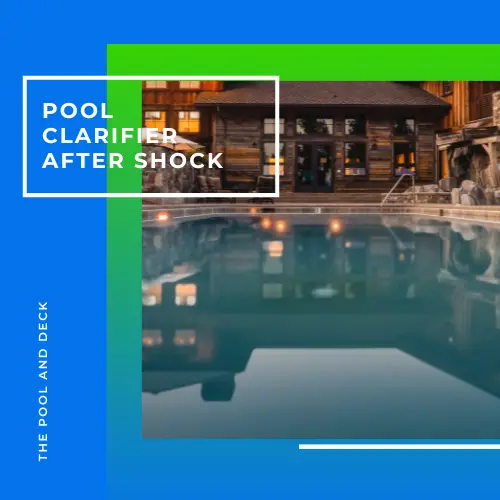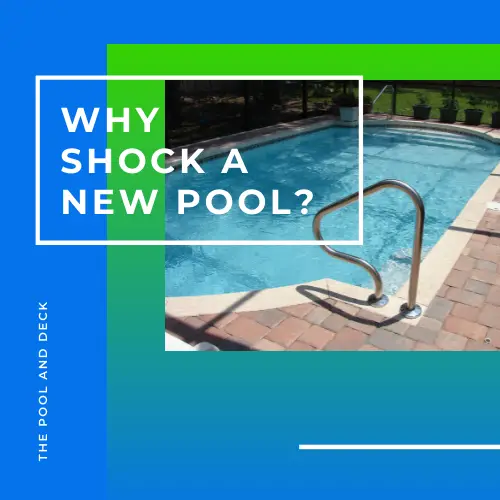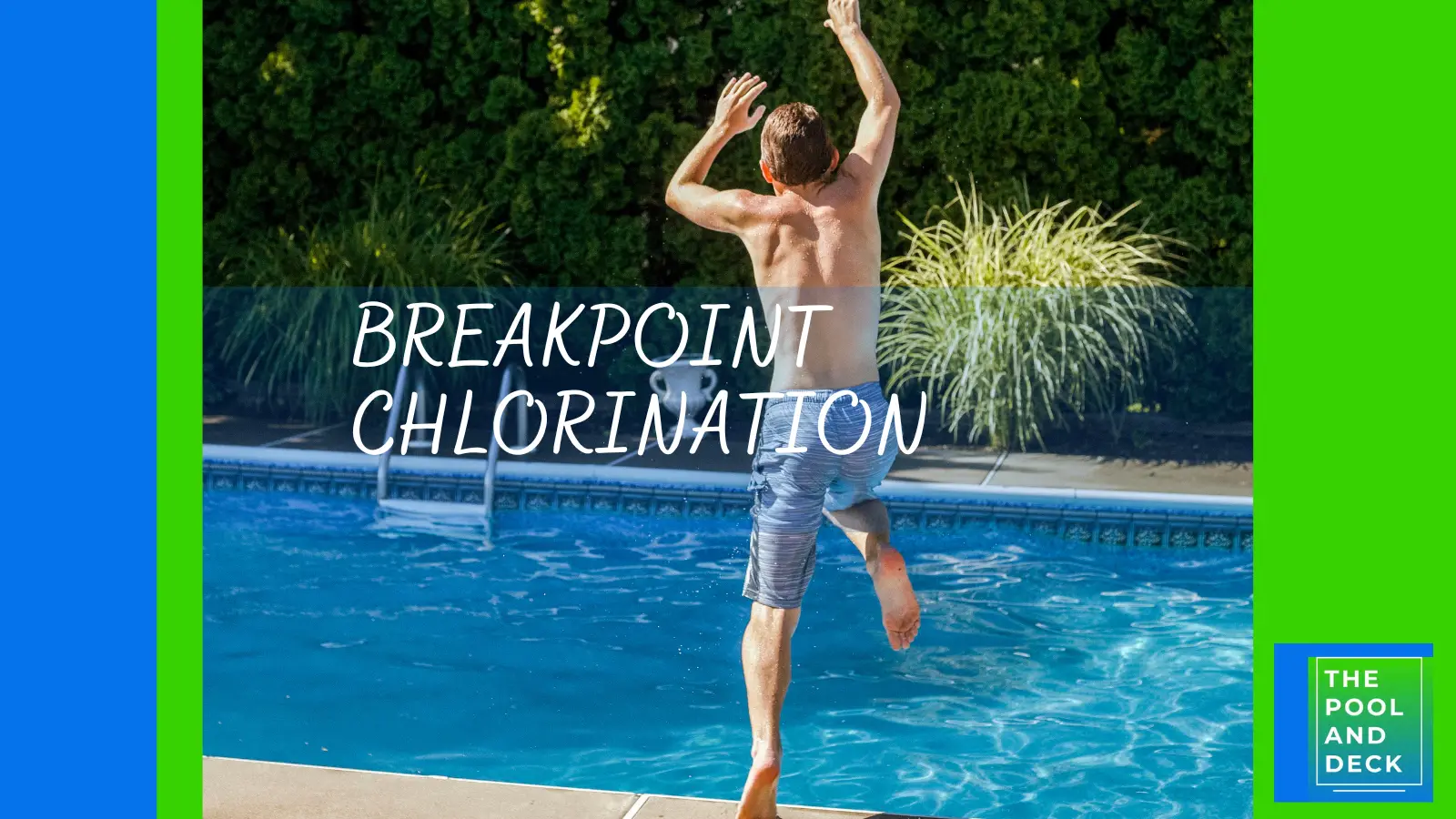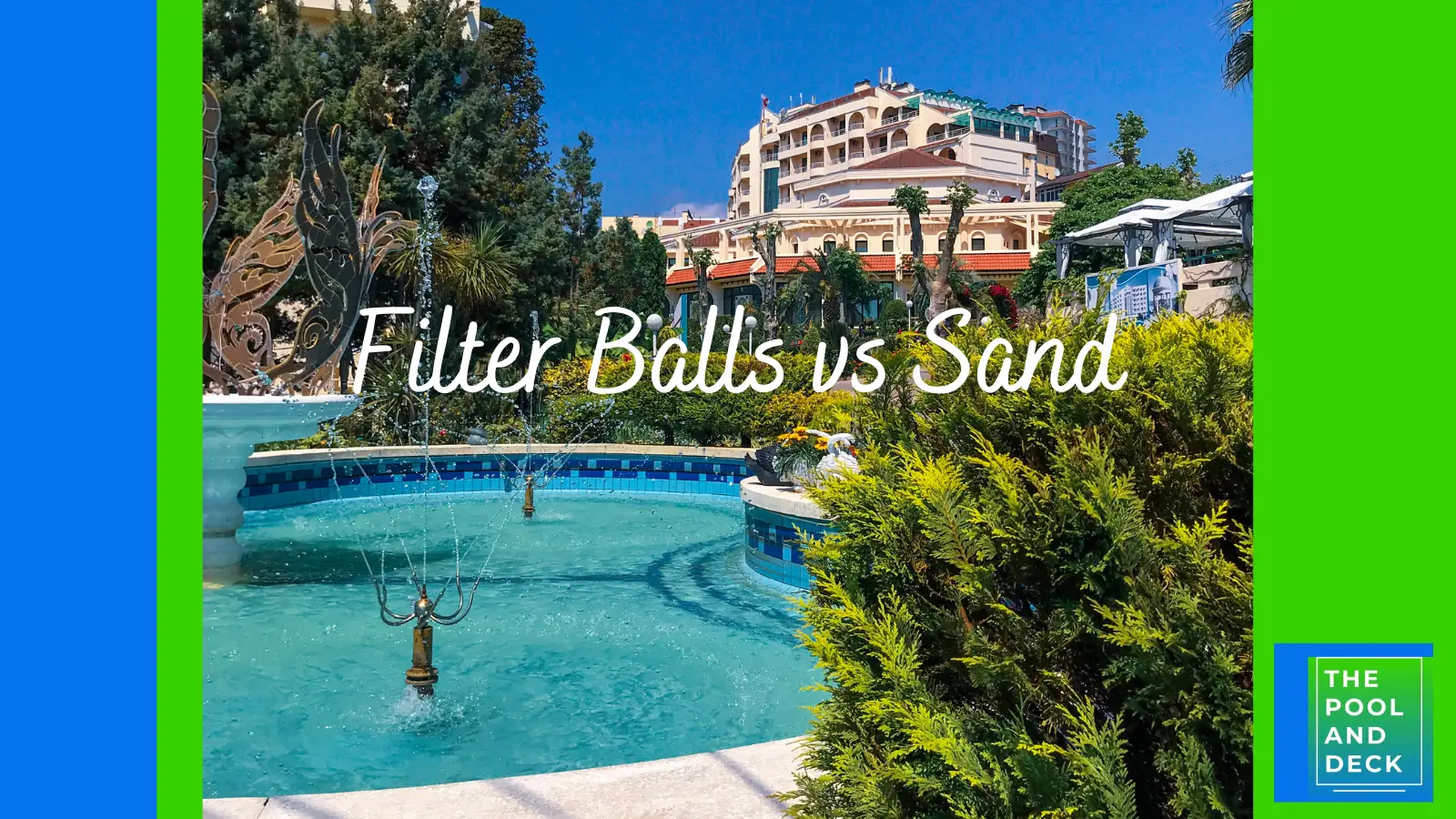Pool Filter Replacement: Complete Beginners Guide!
Table of Contents
Pool Filter Replacement
Are you ready to make a splash this summer? Check the pool filter first. It may need repairs, parts replacement or maybe even a pool filter replacement!
A functioning pool filter is what keeps your pool crystal clear. But your summer plans could get ruined if the pool filter is not in good shape.
This is why it is super important to check out the pool filter when you open the pool for the season.
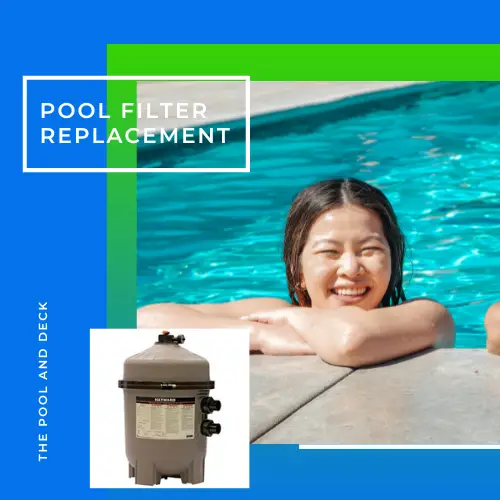
How Long Does Pool Filter Media Typically Last?
There are three types of pool filters based on the filtering media they use. The life of a pool filter often refers to the life of the filter media rather than the life of the entire pool filter assembly.
Here is a table that will give you an idea of how much is the typical life of different filter media.
Here is a table that will give you an idea of how much is the typical life of different filter media.
| Pool Filter Type | Filter Media Life |
| Cartridge | 2 – 3 Years |
| Sand | Sand: 3 – 5 Years Zeolite: 5 – 6 Years Glass: 8 – 9 Years |
| DE (Diatomaceous Earth) | 10 – 12 Years |
Ultimately the actual life of any filter medium depends on the filtration load and the frequency of cleaning.
Cartridge Pool Filter
A cartridge pool filter uses a pleated cartridge made of spun-bonded polyester or other similar materials that can trap debris and contaminants when the pool water is forced to flow through it.
Unlike sand and DE filters, cartridge pool filters can not be backwashed. However, the cartridge can be taken out and cleaned either with a garden hose or by soaking it overnight in a solution of a filter cleaner.
Typically in 2 – 3 years, cleaning or even deep cleaning is unable to make your cartridge filter perform as well as a new filter. You need a pool filter replacement.
Sand Pool Filter
A sand pool filter uses a bed of sand to trap debris and contaminants when pool water is forced to flow through it.
The water enters the top of the filter housing, goes down the standpipe and exits through the perforations in the laterals before rising up through the sand bed.
The filter media may actually be silica sand, zeolite or recycled glass. Even though silica sand is the most popular filter medium, the others work in exactly the same way. They, of course, have different performance efficiencies and life expectancies.
When the sand media becomes clogged with debris & contaminants, it can be cleaned using a process called backwashing.
Backwashing is a process where the flow of water is reversed, and the water is pumped out of the filter and through a waste line, carrying the trapped debris with it. Using a pool filter cleaner will help get rid of oil and greasy components too!
Ultimately, however, you will no longer be able to return the media to its original state. This is when the sand media has reached the end of its life and pool filter replacement is required.
You can expect silica sand to last for 3 – 5 years, zeolite for 5 – 6 years and recycled glass media for 8 – 9 years.
Check out my How To Change Pool Filter Sand? (An Easy 10 Step Guide!) when you need a pool filter sand replacement.
As an Amazon Associate, I earn from qualifying purchases.
Recommended Products
Diatomaceous Earth (DE) Pool Filter
Diatomaceous Earth (DE) is a fine white powder that is made from the fossilized remains of tiny aquatic organisms found in the earth’s crust and called diatoms.
DE is exceptionally good at filtering out impurities and contaminants from water due to its small particle size.
DE powder is added to the filter tank and coats a series of grids or screens that form the filter element. Water is then forced through the DE-coated screens, where the tiny DE particles trap and filter out particles as small as 5 microns.
DE filters, just like sand filters, can be backwashed to clean them. Compared to a sand medium, DE filter grids last much longer.
However, ultimately they too need to be replaced in around 10 – 12 years.
When Should Pool Filter Media Be Replaced?
Irrespective of the type of filter media, it will have 3 stages in its life.
Backwashing or Cleaning
Sand and DE filters can be backwashed, whereas a Cartridge filter can be cleaned with a garden hose. The rule of thumb is that if the pressure gauge reading is around 10 psi higher than the normal psi reading, it is time to backwash or clean.
The process is repeated several times during the life of the filter. During the pool season you may need to backwash (sand or DE) and clean (cartridge) once a week or more often depending on the contamination load.
Deep Cleaning
Deep cleaning becomes necessary if the filter pressure does not return to normal in spite of the above. In this step a pool filter cleaner is used to pry away oils and other greasy contaminants from the media. Pool filter cleaners use enzymes or chemical agents to achieve this goal.
Media Replacement
Ultimately, the filter media degrades to a level where it loses its ability to trap debris & contaminants any more. At this stage you need to go for pool filter media replacement.
Can You Repair a Pool Filter?
The filter media in your pool filter will go through the 3 stages in its life as under:
- Backwashing (sand or DE) or Cleaning (cartridge)
- Deep Cleaning
- Replacement
However, the other parts in the pool filter can also wear out or get damaged and may need repairs or replacements.
Repairs to a Pool Filter
There are two common types of repairs that may be required.
Repairing a Leak at a Plumbing Joint
Parts such as air relief valve, pressure gauge, multiport valve attach to the pool filter using threads. The threads can get misaligned or damaged resulting in pool filter leaking.
Fortunately, if the damage to the threads is minor, you may be able to fix the problem by tightening the part or wrapping Teflon tape on the threads before tightening it.
Repairing a Crack in the Filter Housing
The filter body is typically made of metal, plastic, fiberglass or engineered polymer composites. In spite of the ruggedness, filter tank bodies can develop cracks that will result in your pool filter leaking.
These cracks are usually caused by age, excessive pressure, or damage caused by weather or other external factors. Fortunately, most small cracks can be repaired with a plastic weld or epoxy filler.
Pool Filter Parts Replacement
The pool filters have many parts, both within and attached to it. In case these parts get damaged or are malfunctioning, then the replacement of the part is more cost effective and, therefore, a better option.
Some of the parts that may need replacement are:
- O-rings, seals, gaskets, etc. These are usually made from synthetic rubber which becomes brittle with age and begins to crack. They are pretty inexpensive and it is best to keep some spares in your stock.
- Clamps & Locking Rings
- Air Relief Valve, Backwash Valve
- Pressure Gauge
- Multiport Valve
- Sand Filter Standpipe & Laterals
- DE Filter Grids or Fingers
In most cases, a cartridge pool filter can be repaired. The type of repair needed will depend on the nature and extent of the damage.
For instance, if the cartridge is torn or damaged, it can be replaced with a new one. A damaged O-ring or clamp may also need to be replaced to ensure a proper seal.
Cartridge filters require periodic cleaning, and if the filter becomes clogged or dirty, it may reduce its efficiency. Cleaning the filter cartridge regularly can help prolong its lifespan and prevent the need for repairs.
However, if the cartridge is excessively dirty or damaged, it may need to be replaced altogether.
In general, sand pool filters are not designed to be repaired in the same way that cartridge filters can be.
While some individual components, such as valves or gauges, can be replaced if they become damaged or worn out, the actual sand filter tank is not typically repairable.
This is because the filter tank itself is a sealed unit and any damage to the tank would result in the need for a full replacement.
Additionally, the sand inside the filter needs to be periodically replaced, so over time the tank itself may become worn out or damaged due to the repeated process of emptying and refilling with sand.
If a sand filter is experiencing issues such as leaking, reduced water flow, or excessive pressure, it may be a sign that the filter needs to be replaced.
It’s important to regularly maintain and clean your sand filter, including backwashing and changing the sand as recommended by the manufacturer, to extend its lifespan as much as possible.
If you’re unsure about whether your sand filter needs to be replaced, it’s best to consult with a professional pool technician for an evaluation.
DE (Diatomaceous Earth) pool filters can be repaired in some cases. However, it is important to note that the DE filter grids or fingers, which are the main filtration component of a DE filter, cannot be repaired and must be replaced if they become damaged.
Other parts of a DE filter, such as the manifold, the air relief assembly, the pressure gauge, and the backwash valve, can typically be repaired or replaced if necessary.
If a DE filter is not functioning properly, have it inspected by a professional to determine the root cause of the problem. In some cases, a simple repair or replacement of a part may be all that is needed to get the filter up and running again. In other cases, a more significant repair or replacement may be necessary.
It is always important to follow the manufacturer’s recommended maintenance schedule for your DE filter, which may include regular backwashing, recharging with fresh DE powder, and inspection of all components.
Regular maintenance can help prevent the need for more extensive repairs or replacements in the future.
Can I Replace My Own Pool Filter?
Replacing a pool filter can be a relatively straightforward process, if you have the necessary skills and knowhow. Keep in mind that pool filter replacement can also be complex and potentially dangerous if not done properly.
Before attempting to replace a pool filter, make sure that you have the right tools and equipment, and that you have turned off the power supply to your pool. It is also important to wear protective clothing and eyewear to avoid injury.
If you are unsure about any aspect of the process, or if you do not have experience working with pool equipment, it may be safer and more cost-effective to hire a professional pool service technician to do the job for you.
A trained technician can help ensure that the filter is properly installed and that the pool is safe to use.
Ultimately, the decision to replace a pool filter yourself or to hire a professional will depend on your level of experience and confidence, as well as your budget and time constraints.
Replacement – Step by Step Guide
Here are some general steps to follow when replacing a pool filter:
- Turn off the pool pump and close the pool’s valves to prevent water from flowing into the filter during the replacement process.
- Depending on the type of filter being replaced, you may need to drain the water from the filter tank or remove the filter cartridges. For a sand filter, you’ll need to unscrew the tank’s lid and use a shop vac or scoop to remove the sand. For a cartridge filter, you can remove the cartridges by unscrewing the locking ring or simply pulling them out of the filter housing. For a DE filter, you’ll need to backwash the filter first to remove any remaining DE powder, then remove the filter grids from the housing.
- Before installing the new filter, inspect the filter housing and plumbing for any signs of wear or damage. This is also a good time to clean any debris or buildup from the plumbing lines.
- Install the new filter according to the manufacturer’s instructions, making sure that all connections are tight and secure.
- For a sand filter, fill the tank with the recommended amount of sand. For a cartridge filter, insert the new cartridges and replace the locking ring. For a DE filter, insert the new filter grids and apply a fresh coat of DE powder to the grids.
- Once the new filter is installed, turn the pool pump back on and open the pool’s valves to allow water to flow into the filter. Check for any leaks or air bubbles in the system, and make sure the pressure gauge on the filter is reading within the recommended range.
- Run the pool pump for a few hours to ensure that the new filter is working properly and to clear out any remaining debris in the water.
What Is the Average Price to Replace a Pool Filter?
The average price to replace a pool filter can vary greatly depending on the type of filter and its size, as well as the cost of labor in your area. In general, cartridge pool filters tend to be less expensive to replace than sand or DE pool filters.
For a cartridge pool filter, you can expect to pay anywhere from $200 to $600 for a replacement, depending on the size and brand of the filter. For a sand pool filter, the cost can range from $500 to $1,200, while a DE pool filter can cost between $700 and $1,500 to replace.
Keep in mind that these prices are for the filter itself and do not include the cost of professional installation, which can add several hundred dollars to the total cost.
It’s also worth noting that while it may be tempting to go for a cheaper option, investing in a high-quality pool filter can save you money in the long run by reducing maintenance and energy costs.
Should I Go for a Complete Pool Filter Replacement?
A complete pool filter replacement is usually not necessary in the first 5 – 10 years of a pool filter’s life.
However, if your pool water is constantly murky & dull and all other efforts of getting crystal clear pool waters have failed then there is a possibility that there was an error in choosing the pool filter.
Two possible scenarios are:
Pool Pump “TOO BIG” for your Filter?
Bigger is not better when it comes to selecting the right pool pump. Many pool owners make the mistake of replacing a pool pump with a larger or more powerful pump, which is too big for their filter.
If water is pushed too fast through the filter media, dirt gets pushed right through, especially on a sand filter or cartridge filters, and to a lesser degree on DE filters. The filter fails to do its job.
Cartridge filters and DE grids can get damaged if the design flow rate of the filter is exceeded.
Filter “TOO SMALL” for your Pool?
Do you think your pool filter might be too small? Pool filters may perform quite well under normal loads and climatic conditions but may get overwhelmed when it’s really hot and there are a lot of swimmers. They simply can’t clean the water very well!
Here is the rule of thumb for filter size based on your pool capacity.
| Pool Size (Gal) | Cartridge Filter | Sand Filter |
| 10,000 Gal | 100 sq. ft. | 24 inch (350 lbs of sand) |
| 20,000 Gal | 200 sq. ft. | 24 inch (350 lbs of sand) |
| 30,000 Gal | 300 sq. ft. | 30 inch (600 lbs of sand) |
| 40,000 Gal | 400 sq. ft. | 30 inch (600 lbs of sand) |
When it comes to pool filters, it is better to go for a slightly larger size than recommended, to be on the safe side. A pool filter replacement is recommended if you chose too small a size to begin with.
Cartridge filters are good, but they need to be big enough for your pool. A good rule is to use 100 square feet of filter for every 10,000 gallons of water.
Sand filters are also great, but they need to be big enough too. If they’re too small, you’ll have to use more chemicals and do more work. For a pool with 20-40,000 gallons of water, get a 30-inch sand filter. For a pool with 10-20,000 gallons, get a 24-inch sand filter.
The same goes for DE pool filters. If you get one that’s 1-2 sizes bigger than you need, you’ll be happy you did. You’ll have fewer problems with your pool water, and you’ll be able to run the pump less and use fewer chemicals. Plus, a bigger filter won’t be as likely to get damaged by a pool pump that’s too big.
In case you have made this error, it is best to replace the pool pump with one that is of the correct size. Your pool supplies store should be able to guide you.
Thank you very much for reading the post. I do hope you found it informative and helpful.

